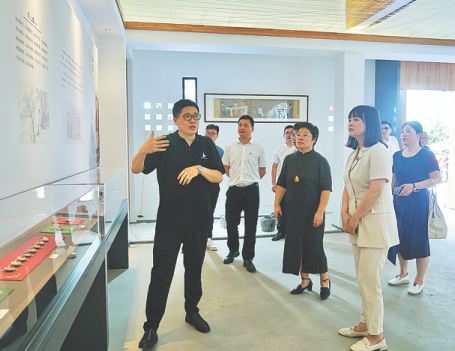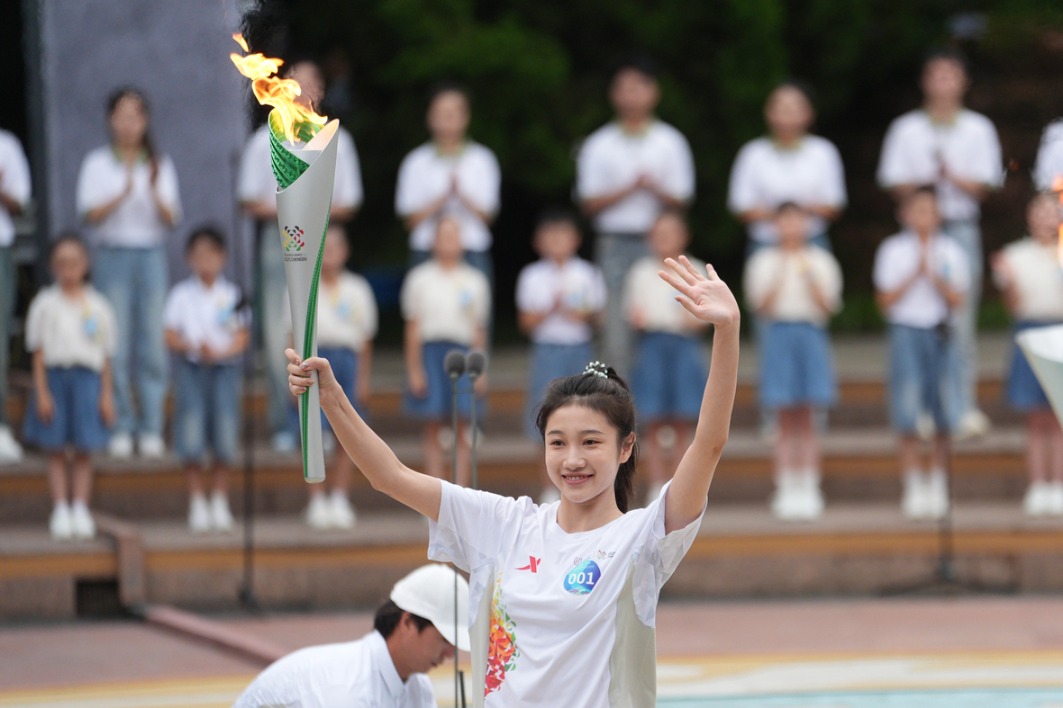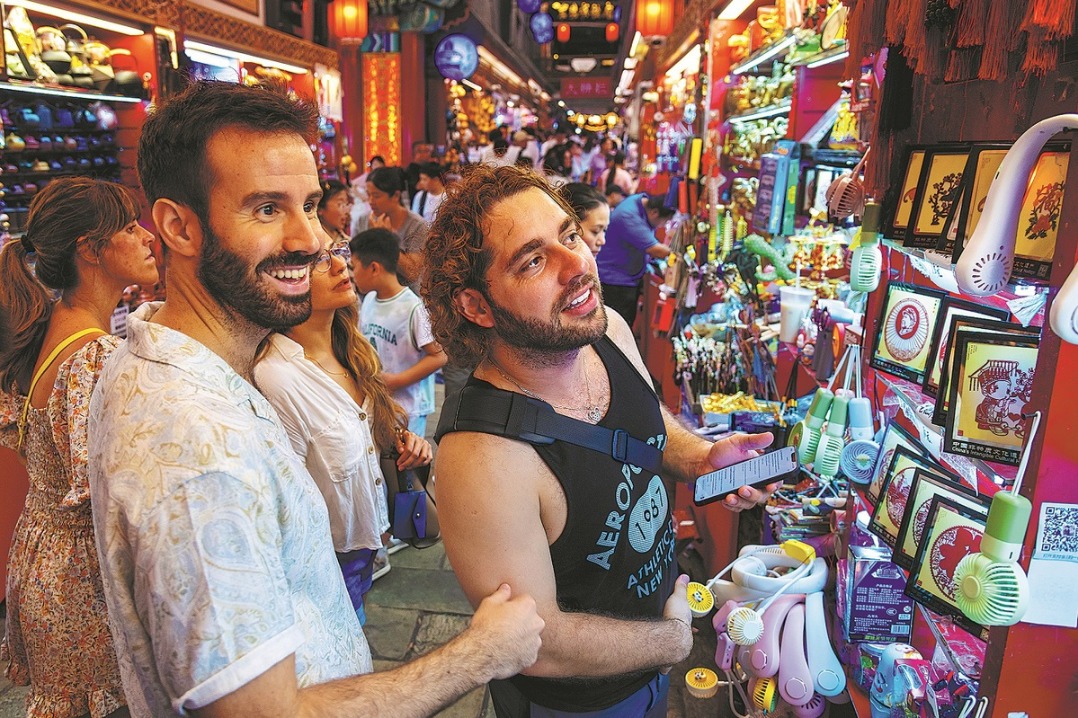Cocoon of creativity
Artist allows local cultural flavor to emerge by imaginative use of silkworms, Yang Feiyue reports.

Chen Jianqing's workshop is full of silkworm cocoons. Hanging ornaments of various shapes and sizes featuring Peking Opera facial makeup, cartoons, Chinese zodiac animals and totems also take up space there.
Chen, 52, a native of Tongxiang city, Zhejiang province, specializes in cocoon art. He uses special pigments on cocoons that go through a treatment, including drying and solidifying.
"Only 5 percent of 50 kilograms of silkworm cocoons can be used for 'painting', since the art is demanding in terms of shapes," Chen says, adding that the rest is used for more practical purposes. "It tests one's patience and meticulousness to make the cocoon art, and it takes hard work to deliver a good work."
Chen has been attracted to painting since senior middle school, when he joined a one-year extracurricular art program hosted by teachers from the China Academy of Art in Hangzhou, Zhejiang province, in 1989. "There was so much exploring-the lines, colors and models," he recalls.
The passion made him leave home after graduation, and he headed for Shenzhen, Guangdong province, to paint at an art gallery in 1990. There he picked up various skills and explored the integration of painting with ceramics, which laid a foundation for his art and craft.
"The more I learned, the more I wanted to learn," Chen says.
After working for about four years, Chen threw his hat in the ring of the national college entrance exam in 1994, setting his sights on furthering his artistic pursuit.
His work experience helped him stand out in the test and he was admitted to Hangzhou Normal University, where he studied art education.
Chen worked as a middle school art teacher in 1996 while pursuing his own artistic work in his spare time. He struck on the idea of cocoon painting in 1999 when the local water town of Wuzhen in Tongxiang began to develop tourism.
"I wanted tourists from outside to take something back that would remind them of Jiangnan (south of the lower reaches of the Yangtze River)," Chen says.
The area enjoys four distinct seasons, which is ideal for the growth of silkworms. It is a major silk production center in China, where sericulture, silk reeling, dyeing and embroidery are developed.
After studying cultural and creative products elsewhere in the country, Chen understood that these products had to be based on distinctive local resources to make the cut. That was when he first thought of silk. However, painting on silk was not easy.
"The color, ink and lines just can't interact on the surface of silk to a desirable effect, as they can on paper," Chen says.
Therefore, he traced the source to silkworm cocoons. However, he found the cocoons to be soft and with pupae (insect) inside.
"It makes painting difficult and is hard to preserve, since the pupae will decay, especially quicker in a humid environment," he says.
He was determined to remove such problems from his path after his early cocoon art on display at the 2010 Shanghai Expo got a good deal of attention from visitors.
"Although my cocoon-painting technique hadn't matured then, it gave me faith in the art," he says.
It took him more than two years to clear the obstacles after looking into related documents and consulting chemistry experts. The goal was to harden the cocoon surface while stabilizing elements inside.
"The idea was to find the optimum temperature and space to treat various numbers of cocoons-say from 10 to 1,000 in a batch," Chen explains.
It was through trial and error that he arrived at a desirable result and the four methods he developed were patented.
Then, Chen got to do what he had been doing at home with the cocoons-art.
Chen tapped into folk cultural elements, adapted and featured them in hundreds of his cocoon works, which he brought to various public events, especially at the 2016 World Internet Conference in Wuzhen.
His works, featuring Peking Opera elements and cartoons dealing with realistic issues in humorous and philosophical ways, struck a note with international guests.
"They were interested in cultural and creative products during our exchanges," Chen says.
In recent years, Chen has tried to integrate tradition with modern appreciation.
"The works would help to promote folk culture if taking into account contemporary standards of beauty," he says.
Now, his cocoon art includes accessories, such as necklaces and pendants, and ornamental items for tables.
In 2018, Chen worked with Zhejiang Sci-Tech University and led some 20 postgraduate students to dig into sericulture and explore artistic expressions.
The university has set up a space at its silk museum to display Chen's cocoon artworks that have drawn people from different walks of life.
"I think sericulture has made a strong presence as more people have bought my works and I have been invited to give lectures or exchange notes with people from other fields," he says.
Speaking about sericulture protection and inheritance, Chen says participation is the key.
He has visited communities, schools and rural areas to engage the public in developing cocoon paintings.
Chen has developed special kits that enable adults and children to make their own cocoon art for fun. He also translated lyrics of ancient songs about silkworms into plain words for the public to better understand the history of sericulture.
In Taoyuan, Tongxiang, Chen has helped integrate rural tourism and culture since 2020. The village is known for growing a type of plums called zuili, and Chen's cocoon art has brought more visitors to appreciate what the place has to offer.
A museum for cocoon art was set up in 2020, where Chen offers visitors interactive experiences.
"More students on learning tours have visited our village since the museum opened," says Ling Feng, an official in Taoyuan village.
"Their parents also come along," he says, adding that the combination of cocoon art and plums has given the rural economy a boost.
Chen calls for more joint efforts among governments, enterprises and artists in preserving sericulture.
"Not just cultural and creative items, mulberry wine, tea and even facial masks can be developed from sericulture," he says.
Chen says he will also do more to popularize traditional culture.
"I have noticed that international guests are more ready to take in our folk culture through interactions with it themselves," he says.

































